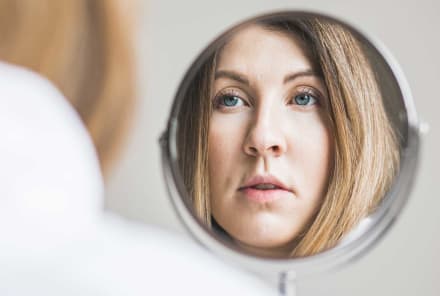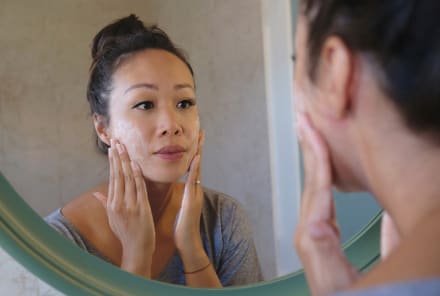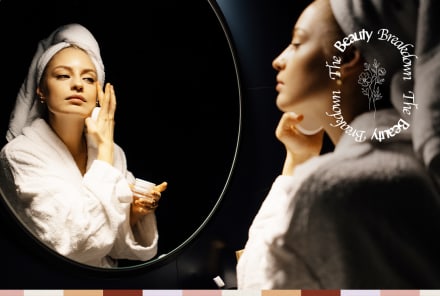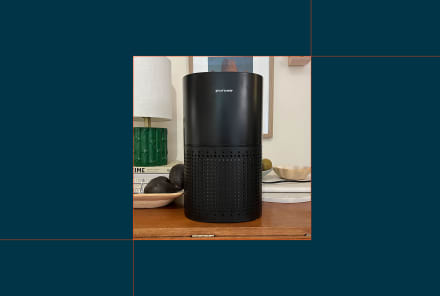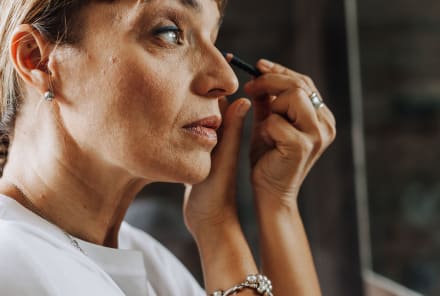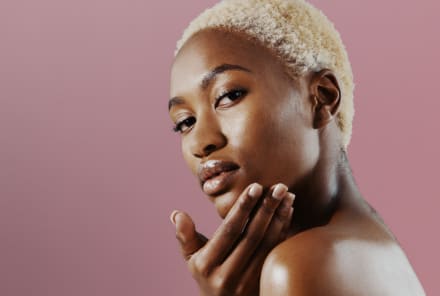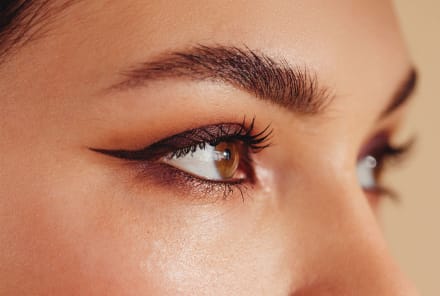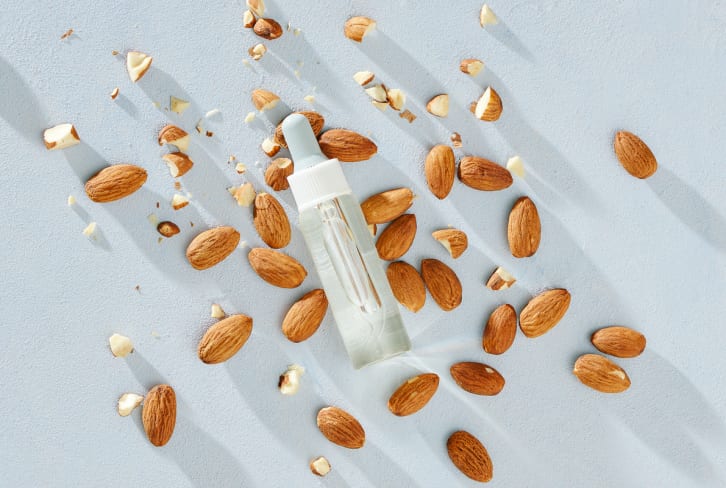Advertisement
11 Must-Try Tips On How To Use Retinol From Derms


In the skin care world, retinol earns the undisputed title of most famous. The powerful ingredient is hailed as the “gold-standard” by dermatologists, beloved by skin care enthusiasts—and is the subject of countless user inquiries. One of these inquiries is the basic: How do I use it?
It may seem like a strange question to ask—given it’s just a topical skin care product—but the reality is that retinol does come with a laundry list of instructions. So it’s reasonable that someone may be confused on how to best fold it into their skin care routine.
Here, we dive into how exactly to use the healthy-aging powerhouse.
Retinol: An overview
If you’re looking for tips on how to use retinol, chances are you know a thing or two about the ingredient. But a little recap never hurts!
Retinol1 refers to a compound derived from vitamin A. It's available in commercial products and over-the-counter (OTC) at low strengths. Retinol falls under the umbrella term "retinoids," which includes all vitamin A derivatives—both OTC and prescription. However, sometimes in the broader conversation, "retinol" is used for vitamin A itself or it's used interchangeably with "retinoid." While this isn’t exactly accurate, it’s how people have come to understand the ingredient colloquially.
Retinol benefits
For a full list of benefits, please refer to our guide to retinol. Here, an abridged version of the results you can come to expect.
- Improved collagen production. Retinol can activate the genes that upregulate collagen production, which improves natural levels2 in the skin according to research. This will help your complexion appear more firm, lifted, and with fewer wrinkles and fine lines.
- Increased cell turnover. As our natural cell turnover rate slows with time, this can help speed things up—while increasing dermal density3 of the lower layers (a good thing). This can also help fade dark spots and smooth skin texture.
- Treats acne. Retinol inhibits the formation of microcomedones4 in the skin, which will help clear up acne with consistent use.
Cautions & side effects
While it’s a beloved ingredient, it’s not without its warnings or potential side effects. First and foremost, you should not use retinol if you are pregnant. While the primary concern is ingesting oral retinoids, doctors and derms recommend ceasing topical use as well5 out of an abundance of caution.
While it's a debated topic retinol may increase photosensitivity6 in some folks (meaning skin burns easier when exposed to light), however this usually subsides after a month of use. Most derms will still recommend you use it in the evening, however. Finally it is notoriously unstable and difficult to tolerate.
This is why it's vital you use the ingredient correctly.
How
How to start using retinol in your skin care routine: 11 tips
How you use retinol is integral to its success—and there are many ways to customize your skin care routine to make it work for you and your skin type.
Select your retinol
Finding a quality retinol for your skin type is half the battle. Beginners who aren’t interested in prescription-strength should opt for low concentrations of retinol (0.5% or lower), encapsulated retinol, retinyl palmitate, or retinyl esters. If you’re looking to level-up your routine, higher concentration of retinol and retinaldehyde are more potent. Check out our favorite retinol serums here for your browsing pleasure.
For those experiencing more severe cases of acne or who want to jump-start a healthy-aging routine, you may be considering prescription grade. A dermatologist will suggest one based on your specific skin type and sensitivity level.
For more information on the types of retinoids, we cover the basics in the section below. So read more there.
Start slow
One of the biggest mistakes folks make when starting a retinol is using it daily immediately. Retinol is an ingredient you work up to—with a heaping dose of patience. Here’s a basic schedule to follow, but adjust it accordingly to your own needs (some folks with oilier skin will be able to move faster, while those with dry skin may want to move slower).
- Stage 1: Start the treatment. Most folks will be fine starting with using it every 3 nights. If you have sensitive skin, you should start with using it 1-2 times a week.
- Stage 2: Slowly shorten your time between usage. If you experience no irritation for the first 1-2 weeks, you can feel comfortable moving it up to every-other-night. For sensitive skin folks, you can up your dosage to once every 3 nights, then to every other night, letting your skin become acclimated with each acceleration.
- Stage 3: Let skin calm before leveling up. If you did experience a “retinol reaction” (more on that later), then wait until the irritation has fully subsided. Once your skin is calm for 1-2 weeks, then you can feel comfortable that your skin has fully adjusted and is ready for the next step.
- Stage 4: Try every night: The last stage will be using the product every night. Some people may never be able to tolerate retinol every evening, and it’s perfectly fine to stick to less usage.
Only use a thin layer
More isn’t always better, and no place is that more true than retinol. For gel formulas, use a pea-sized amount, and for serums, use a glob about the size of your fingertip. Tap the product along the four quadrants of the face (forehead, chin, and both cheeks) before spreading it out in a thin, even layer.
Anything more can trigger irritation. And perhaps even more devastatingly, you’re simply wasting your product. And given that these come with a hefty price tag, that’d be a real shame, no?
Apply it on dry, clean skin
Retinol always follows after your face wash, but before any following hydrating step. It’s considered a treatment step, so it should be on freshly cleansed skin, to allow for better penetration into the epidermis and more effective use.
After washing, allow your skin to fully dry and calm post wash. (Heres why: Damp skin increases the absorption of the product, increasing likelihood of irritation.) If you have dry or sensitive skin, you may even want to wait several minutes. "It is best to wait at least 10 minutes after cleansing before applying retinol if you have dry skin," says board-certified dermatologist Loretta Ciraldo, M.D., FAAD. "This will limit the risk of burning or irritation."
After the retinol, wait for it to fully dry. Then apply your hydrating steps.
Use it at night
Again, while this is a debated topic, retinol may cause increased photosensitivity of the skin7 in some users, meaning it is more likely to burn or be irritated by UV light. In the past, retinoids were also known to be "photolabile," which means the ingredient changes when exposed to light. However, with advancement in technology, some retinoids can be used during the day if you prefer. However, most derms will still use it in the evening, and use calming or antioxidant-rich products during the day.
On retinol nights, skip other treatments
Retinol does not play well with other strong actives, as it can cause further irritation, sensitivity, or even de-activite the other ingredients. Thus on the nights you use retinol, skip the following ingredients.
- Vitamin C
- AHAs
- BHAs, like salicylic acid
If you’d still like to use any of the above ingredients, you certainly can. Here’s how:
- Use vitamin C serums during the day, and retinol at night (read our guide to using retinol and vitamin C here)
- Alternate nights in which you use AHAs/BHAs and retinol (read our guide to using retinol and salicylic acid here)
- Here’s one caveat: If you use a serum with these ingredients in the formula, that’s fine as the product was designed in such a way that the ingredients are able to work together.
Retinols can (and should!) be used alongside calming, hydrating ingredients. So feel free to use with hyaluronic acid, peptides, ceramides, and gentle botanical serums.
Pair it with an emollient-rich moisturizer
Because retinol is drying, be sure to pair it with a hydrating night cream. Anything that causes skin irritation (such as a retinol) has the potential to damage and disrupt the barrier. Thus it’s very important to support your skin barrier while you’re using a retinol.
A damaged skin barrier will not only mean a dry, angry complexion—but it also triggers inflammation in the skin. Prolonged, chronic inflammation breaks down collagen, elastin, and lipids—so it’s very important to keep your skin barrier intact. In fact, research suggests that retinol is more effective when the barrier integrity is maintained before and throughout retinol usage. Some of the best things to use to strengthen your skin barrier are ceramides, peptides, hyaluronic acid, fatty acids, panthenol, niacinamide, and biotic ingredients.
mbg tip:
Avoid use around delicate areas (unless directed otherwise)
The skin around the lips and eyes are particularly thin, and therefore more prone to irritation. You should avoid using retinol on these areas, unless directed otherwise. There are several retinol-infused eye creams on the market, which are safe for use as they were formulated with the intention of being used around the eye.
One way to make sure your retinol isn’t causing lip or eye irritation is to apply a buffering product just before retinol. For example, you can apply a thick eye cream or nurturing lip balm to the areas, which will inhibit retinol penetration into the skin.
In addition, lots of folks experience flakes around the nose (especially in the winter). "Skin care products can also cause dryness, peeling, and irritation around the nose," says board-certified dermatologist Raechele Cochran Gathers, M.D.. "For example, retinoids, whether used for acne or wrinkles, can irritate the sensitive skin around the nose.” If you’re dealing with irritation here, be sure to avoid the area until it clears up. Then you can ease back into using retinol on the area.
Use sunscreen during the day
Sun protection is one of the most important things you can do to help your skin age better, as UV damage accounts for up to 80% of premature aging8 for many individuals. Most folks use retinol as a way to “turn back the clock”—meaning they’d like to reverse signs of aging and damage, such as sun spots, wrinkles, and crepey skin. However, all those benefits are basically null-en-void if you’re not protecting the skin come morning.
mbg tip:
Adjust your skin care routine as needed
Skin care is not stagnant. Your routine should change and evolve with you. Meaning: If you find that something is no longer working for your skin or lifestyle, it’s OK to make changes.
For example, there are many hormonal changes that folks will experience throughout their lifetime. These changes in the body will be reflected in the skin. For example, many people find that their skin becomes more sensitive during menopause9; so you may find that you need to use retinol less frequently or switch to a lower concentration.
Stressful life events can also impact the skin, as many people experience inflammation flare ups as a result. Again, you may want to lessen retinol use while skin is inflamed until you’re better able to tolerate it.
Even small changes can impact your routine, like traveling. “Your skin may take days to adjust to the new climate conditions, and I don't believe it's worth the downtime that may come with the climate adjustment," explains Ciraldo, adding, "and if you are planning a winter beach getaway, I'd leave the retinol home since you can develop sun sensitivity from it.”
But even lifestyle changes can impact your skin care routine. Retinol is an expensive product, so if you need to cut back on spending for whatever reason—it may be the product that gets the ax. And that’s OK! You can take breaks from retinol.
Essentially: Just because you’ve started a retinol routine does not mean you’ll use it in the same way forever. You can—and should—adjust your retinol usage to fit your skin and lifestyle.
Be patient
Glowing skin takes time. Don’t expect a complexion overhaul overnight! Products—especially retinol—take time to actually work, so be sure to give it 2-3 months before evaluating if it’s effective. In fact, you may not see full results until about six months of use1.
What step is retinol in my skin care routine
We covered this in the above, but as a recap this is what your nighttime routine should look like.
- Step 1: Cleanser (single or double cleanse, depending if you wear makeup or not)
- Step 2: Toner (optional)
- Step 3: Retinol
- Step 4: Moisturizer
- Step 5: Oil (optional)
The “retinol reaction” and how to avoid it
The “retinol reaction” is a colloquial term used to describe the adjustment period many folks experience when starting a new retinol. For lots of people, symptoms of a retinol reaction will be intense dryness, flakes, redness, “purging” breakouts, general irritation, and increased sensitivity.
For most folks, this should only last 2-4 weeks time. However, depending on your skin sensitivity level naturally, you may find your adjustment period is much longer.
The good news is that there are tricks to help you avoid this reaction. Here, steps you can take to buffer retinol’s effects.
- Sandwich the ingredient. This is a practice in which you apply a layer of a hydrating face lotion, the retinol, then re-apply the lotion on top. "If you want to decrease the potency of a serum—like if it contains potentially irritating ingredients like retinol—then applying a moisturizer first could help make the serum less potent and less irritating," board-certified dermatologist Hadley King, M.D. told us about the layering trick. This will serve as a calming buffer.
- Skin cycle. Skin cycling is a skin care routine in which you cycle between exfoliation (night 1), retinol (night 2), and then 1-3 days of recovery, in which you just use calming and hydrating products. Skin cycling is a great practice to keep if you find that you can’t tolerate nightly use of retinols (as many folks can’t.)
- Start with a low concentration or gentler version. In the next section we get into the various types of retinoids to look for—some more “beginner-friendly” than others.
mbg tip:
Types of retinol
One of the most important steps on your retinol journey is deciding which retinol is right for you. A professional can help guide you, but as an overview here are the various types and who they might be suited for
- Retinoid: This is the umbrella term that includes all vitamin-A derivatives, including prescription strength and OTC.
- Tretinoin: This is a very common prescription-grade product that has been used for decades and is available in many strengths and formulations. It’s best for those with acne or aging concerns (like fine lines and dark spots). Sometimes it’s referred to by its most famous brand-name option, Retin-A.
- Tazarotene: This is the strongest of the retinoids, and only available with a prescription. This is not the first one to give a try—it’s reserved for acne and skin conditions that haven't been successfully treated with gentler versions.
- Adapalene: Adapalene is an easier retinoid than tretinoin and tazarotene, and it comes in a few strengths. In fact, a gentle 0.1% adapalene gel is actually available OTC (i.e. Differin Gel), while higher strengths are reserved for prescriptions.
- Retinaldehyde: This is considered to be the strongest available without a prescription. Generally don’t recommend starting with products formulated with this, but can be a very effective option for those with mature skin looking to level up their skin care routine.
- Retinol: Retinol is available without a prescription, and what you’ll commonly find in the beauty aisle. It can come in many concentrations and forms, too—from gels and serums to night creams and more. OTC retinol cannot exceed 1%, so that's your upper threshold. Below that, there’s a full range of concentrations: the lower, the gentler. You can also look for encapsulated retinol, which has a slower release making it easier on the skin.
- Retinyl palmitate: This is another vitamin A derivative that has similar effects to retinol—this is much gentler on the skin. It’s a great beginner option, or for folks who have sensitive skin.
- Retinyl esters: This is the gentlest and most stable form available. It’s also the least potent.
- Bakuchiol: While not a retinol, it is the most famous retinol alternative that has similar effects.
FAQ
Do you put retinol on before or after moisturizer?
For best results, use your retinol on freshly cleansed, dry skin—before your moisturization step. However, some users may benefit from applying retinol in between two layers of moisturizer (a concept called “retinol sandwiching”) as it can help buffer the ingredient’s drying effects.
How often should you use retinol?
You can use retinol up to once per day, as tolerated. Lots of folks have trouble using it nightly, so they use it every-other-evening or every 3-4 days. It’s best to start slow and work your way up.
What step should retinol be in my routine?
Retinol should follow your cleanser. Apply a pea sized amount on clean, dry skin. Let it fully absorb and dry before applying your moisturizer.
Is retinol “anti-aging”?
Retinol is an incredible ingredient to treat fine lines, dark spots, sagging, and other signs of aging skin. It’s often referred to as an “anti-aging” ingredient, but we prefer to use the term “healthy aging” or “skin longevity,” as these celebrate the joy it is to grow older.
The takeaway
If you’re thinking about starting to incorporate retinol into your daily routine, it’s important you take the time to familiarize yourself with how to do it correctly. It’s an ingredient that can cause irritation if used too aggressively—and on the flip side, it can be rendered less effective when used improperly. Ready to give it a go? Well, time to check out our favorite retinol serums and face creams in that case.
9 Sources
- https://www.ncbi.nlm.nih.gov/pmc/articles/PMC2699641/
- https://jamanetwork.com/journals/jamadermatology/fullarticle/412795
- https://www.ncbi.nlm.nih.gov/pmc/articles/PMC6791161/
- https://www.ncbi.nlm.nih.gov/pmc/articles/PMC5574737/
- https://www.ncbi.nlm.nih.gov/pmc/articles/PMC3114665/
- https://www.fda.gov/drugs/special-features/sun-and-your-medicine
- https://pubmed.ncbi.nlm.nih.gov/3530309/
- https://www.ncbi.nlm.nih.gov/pmc/articles/PMC3790843/
- https://pubmed.ncbi.nlm.nih.gov/27873738/
Watch Next
Enjoy some of our favorite clips from classes
Enjoy some of our favorite clips from classes
What Is Meditation?
Mindfulness/Spirituality | Light Watkins
Box Breathing
Mindfulness/Spirituality | Gwen Dittmar
What Breathwork Can Address
Mindfulness/Spirituality | Gwen Dittmar
The 8 Limbs of Yoga - What is Asana?
Yoga | Caley Alyssa
Two Standing Postures to Open Up Tight Hips
Yoga | Caley Alyssa
How Plants Can Optimize Athletic Performance
Nutrition | Rich Roll
What to Eat Before a Workout
Nutrition | Rich Roll
How Ayurveda Helps Us Navigate Modern Life
Nutrition | Sahara Rose
Messages About Love & Relationships
Love & Relationships | Esther Perel
Love Languages
Love & Relationships | Esther Perel
